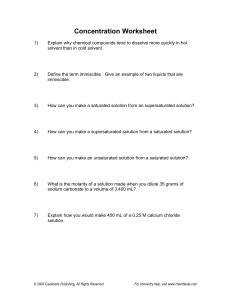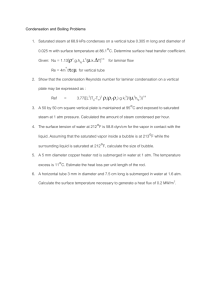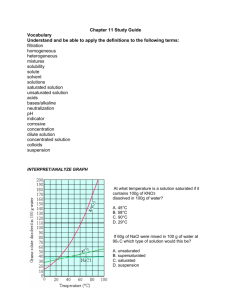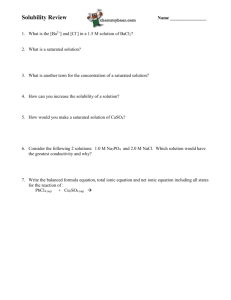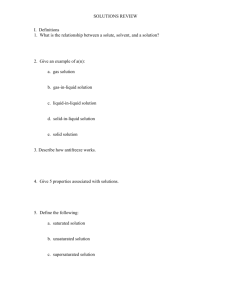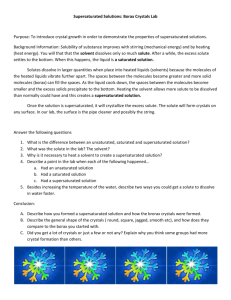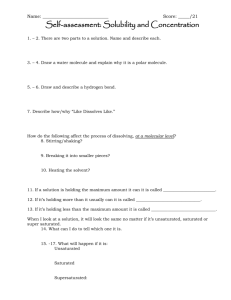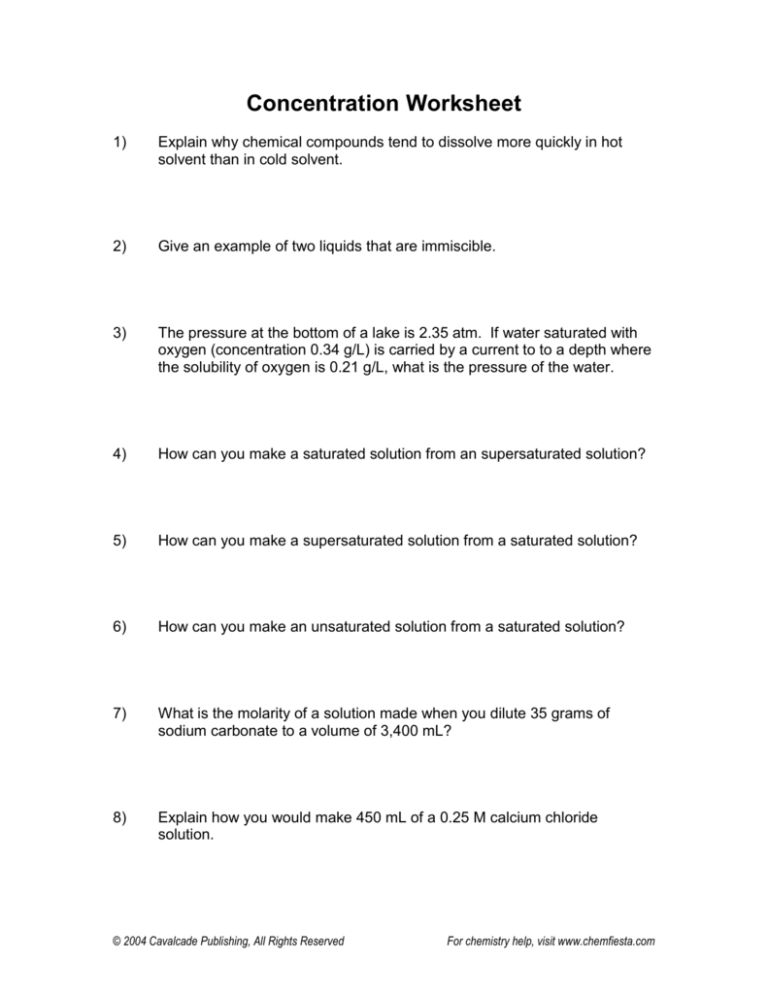
Concentration Worksheet
1)
Explain why chemical compounds tend to dissolve more quickly in hot
solvent than in cold solvent.
2)
Give an example of two liquids that are immiscible.
3)
The pressure at the bottom of a lake is 2.35 atm. If water saturated with
oxygen (concentration 0.34 g/L) is carried by a current to to a depth where
the solubility of oxygen is 0.21 g/L, what is the pressure of the water.
4)
How can you make a saturated solution from an supersaturated solution?
5)
How can you make a supersaturated solution from a saturated solution?
6)
How can you make an unsaturated solution from a saturated solution?
7)
What is the molarity of a solution made when you dilute 35 grams of
sodium carbonate to a volume of 3,400 mL?
8)
Explain how you would make 450 mL of a 0.25 M calcium chloride
solution.
© 2004 Cavalcade Publishing, All Rights Reserved
For chemistry help, visit www.chemfiesta.com
Concentration Worksheet – Answers
1)
Explain why chemical compounds tend to dissolve more quickly in hot
solvent than in cold solvent.
The solvent molecules have more energy to pull the solute particles
apart.
2)
Give an example of two liquids that are immiscible.
Oil and water.
3)
The pressure at the bottom of a lake is 2.35 atm. If water saturated with
oxygen (concentration 0.34 g/L) is carried by a current to to a depth where
the solubility of oxygen is 0.21 g/L, what is the pressure of the water.
1.45 atm
4)
How can you make a saturated solution from an supersaturated solution?
Add a seed crystal – the solute will crystallize out until you get a
saturated solution.
5)
How can you make a supersaturated solution from a saturated solution?
If it’s a hot saturated solution, you can cool it. If it’s not, you can let
the solvent evaporate to make it more concentrated.
6)
How can you make an unsaturated solution from a saturated solution?
Add solvent.
7)
What is the molarity of a solution made when you dilute 35 grams of
sodium carbonate to a volume of 3,400 mL?
0.097 M
8)
Explain how you would make 450 mL of a 0.25 M calcium chloride
solution.
Add water to 12.5 grams of calcium chloride until the solution has a
final volume of 450 mL.
© 2004 Cavalcade Publishing, All Rights Reserved
For chemistry help, visit www.chemfiesta.com

